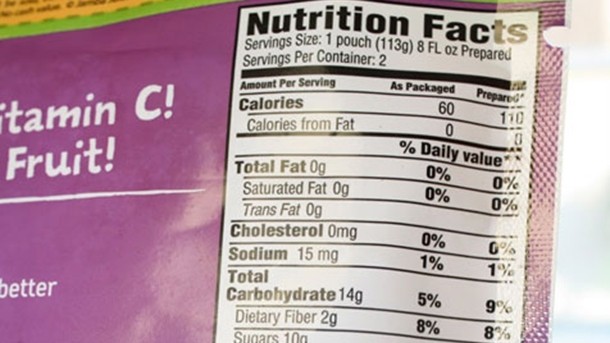Nutritional food labels not working in New Zealand, says study

The study, which was conducted by researchers at the University of Canterbury, instead found that Kiwi consumers reacted better to labels which provide relatable, transparent information that is easily converted into exercise expenditure or clearly states which products are good and which are bad.
Under the study, UC researchers collected a total of 591 online responses from participants who were given an identical survey, where the way in which the nutritional information was communicated differed across the sample.
Michelle Bouton, a researcher on the study, said that they included a star system which displayed one, two or three stars on the product, depending on how many calories were in the product.
“A traffic light label was divided into five categories of the main nutritional components and coloured red [bad], orange [moderate] or green [good],” Bouton said, adding that they also included walking and running labels which stated how many minutes of exercise were needed to burn off the product.
Daily intake system ineffective
“Our findings showed that the current daily intake system was so insignificant that only 23% of participants recalled seeing it. This was alarmingly low compared to the recall rate of the running [89%], walking [93%] and traffic light label [70%],” she said.
Bouton said that through their study, the researchers found that those who were presented with the walking label were most likely to make healthier consumption choices, regardless of their level of preventive health behaviour.
“Therefore, consumers who reported to be unhealthier were likely to modify their current negative behaviour and exercise, select a healthier alternative or avoid the unhealthy product entirely when told they would need to briskly walk for one hour and 41 minutes to burn off the product,” said Bouton.
Traffic lights work
“The traffic light system was found to be effective in deterring consumers from unhealthy foods, while also encouraging them to consume healthy products,” she added.
“Although the running label was found to be effective with participants who reported a healthy lifestyle, it was found to be ineffective with those who were yet to adopt a healthy lifestyle. A consumer who does not actively exercise is less likely to start running than a consumer who is already active.”
Ekant Veer, associate professor of marketing at UC’s Department of Management, Marketing and Entrepreneurship and study supervisor, said the findings differ from what people initially thought would be an effective communication method.
“Information and numeric figures are ineffective at aiding consumers with low levels of health literacy to make healthy consumption choices. Images and colours are found to be much more effective and understandable forms of communication,” he said.
“As the overwhelmingly high obesity rates in New Zealand continue to climb, something needs to be done to improve the health of our society. This information provides valuable insight into understanding consumption behaviours’ associated to food labels. New Zealand still has one of the highest obesity rates in the world.”











